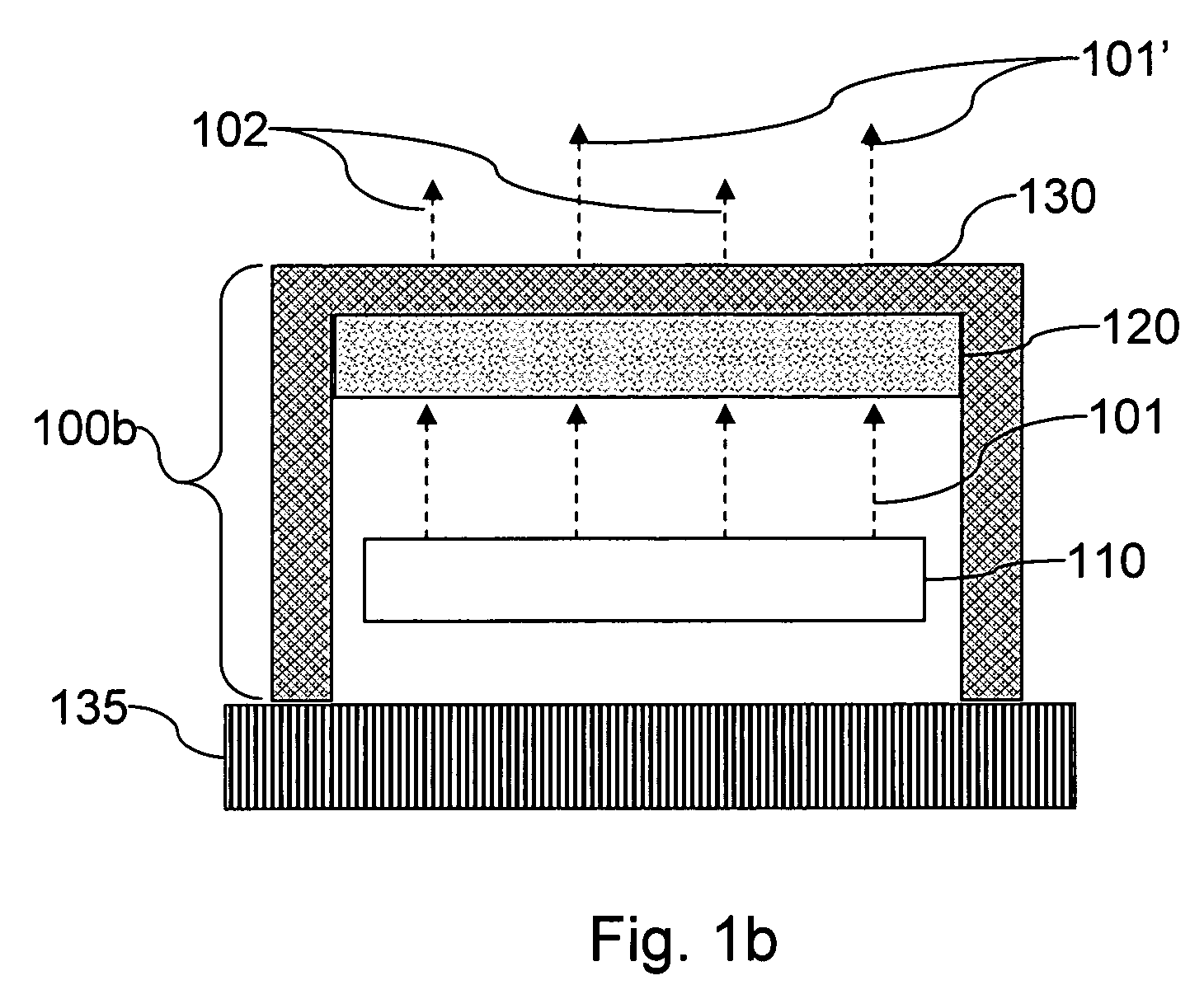Wavelength-converting light-emitting devices
a wavelength-converting, light-emitting device technology, applied in the direction of semiconductor devices, basic electric elements, electrical equipment, etc., can solve the problem that the light-emitting device incorporating the wavelength-converting region cannot emit light with wavelength(s) that may not be possibl
- Summary
- Abstract
- Description
- Claims
- Application Information
AI Technical Summary
Problems solved by technology
Method used
Image
Examples
Embodiment Construction
[0025]Certain embodiments of the invention provide light-emitting devices and methods associated with such devices. The light-emitting devices may include a thermally conductive region in contact with a wavelength-converting region (e.g., a phosphor region). The wavelength-converting region can absorb light emitted by a light-generating region (e.g., a semiconductor region) of the device and emit light having a different wavelength than that absorbed. In this manner, the light-emitting devices can emit light of wavelength(s) (and, thus, color) that may not be obtainable from devices that do not include wavelength-converting regions. As described further below, the thermally conductive region may aid in the extraction of heat resulting from light absorption in the wavelength-converting region, which, if excessive, may impair device operation. The presence of a thermally conductive region can enable devices including wavelength-converting regions to operate even at high power levels (...
PUM
 Login to View More
Login to View More Abstract
Description
Claims
Application Information
 Login to View More
Login to View More - R&D
- Intellectual Property
- Life Sciences
- Materials
- Tech Scout
- Unparalleled Data Quality
- Higher Quality Content
- 60% Fewer Hallucinations
Browse by: Latest US Patents, China's latest patents, Technical Efficacy Thesaurus, Application Domain, Technology Topic, Popular Technical Reports.
© 2025 PatSnap. All rights reserved.Legal|Privacy policy|Modern Slavery Act Transparency Statement|Sitemap|About US| Contact US: help@patsnap.com



